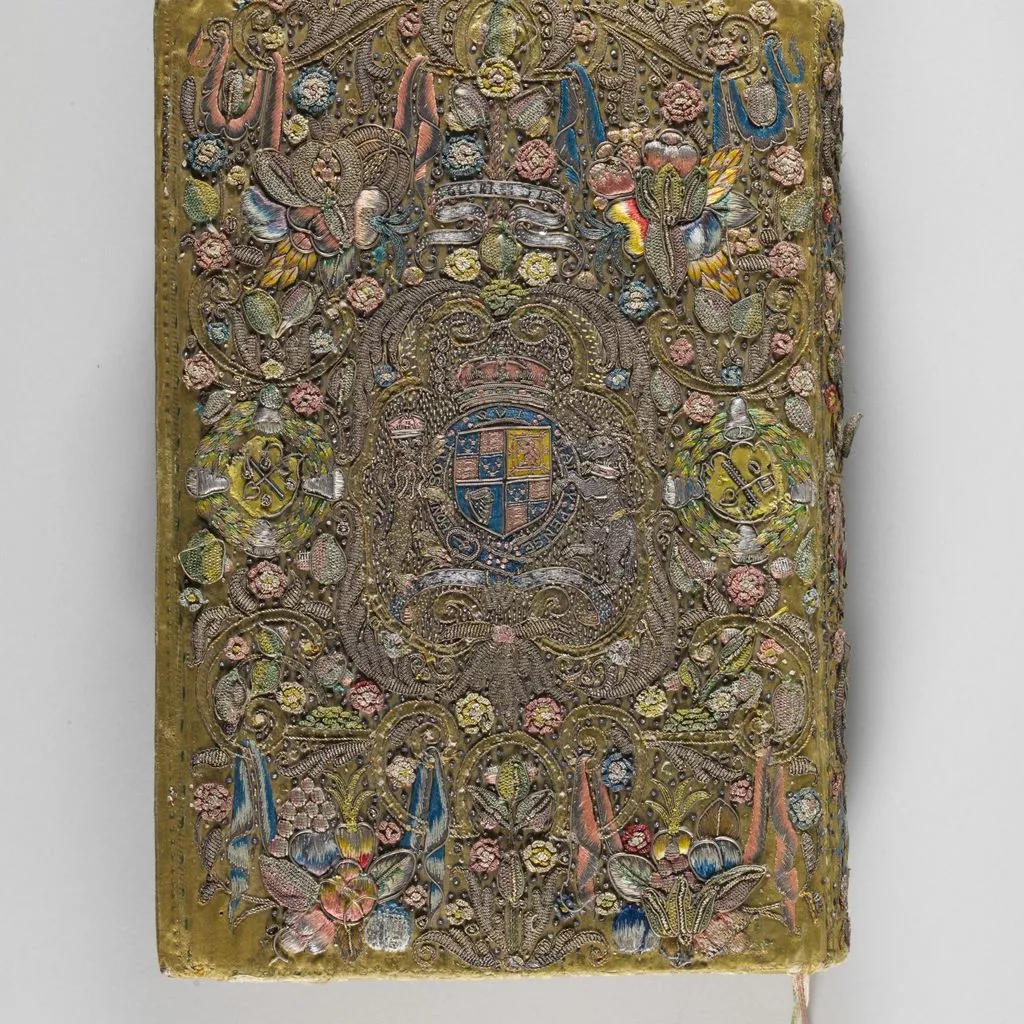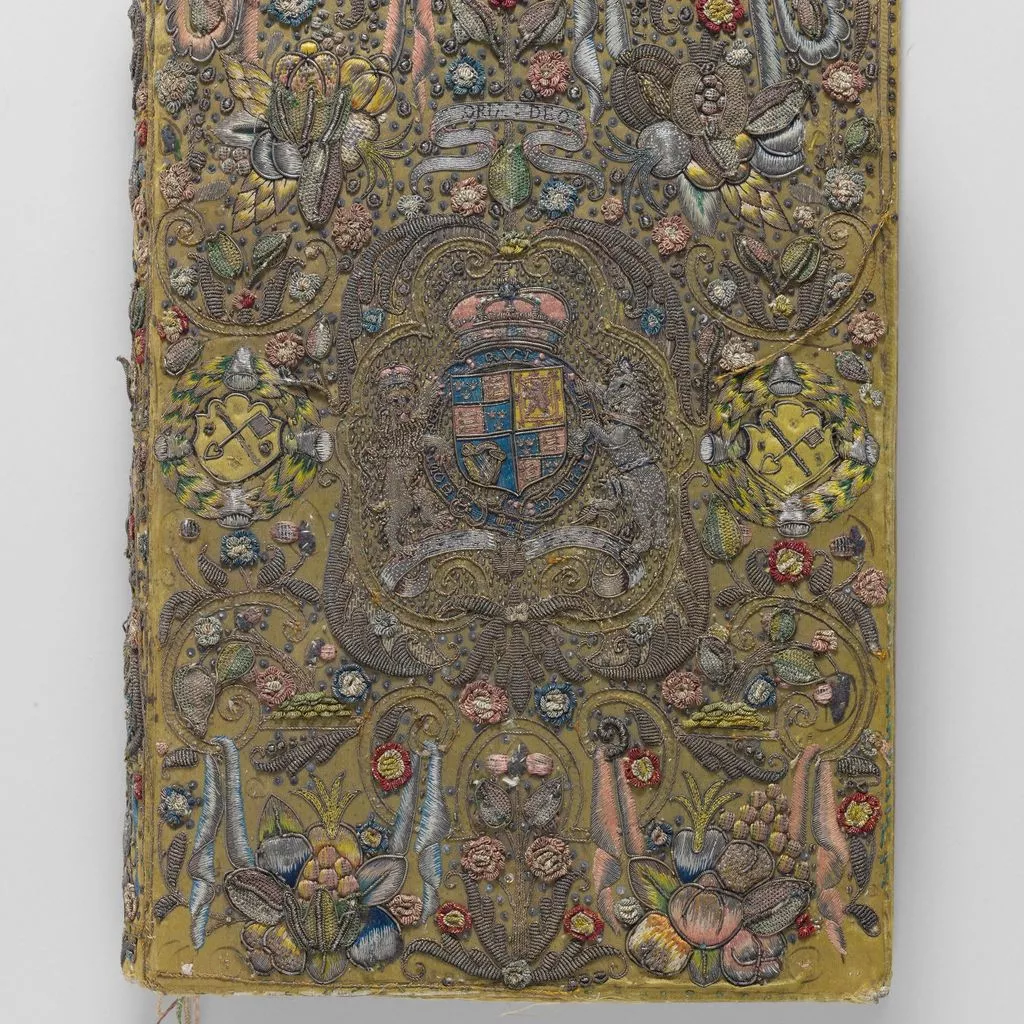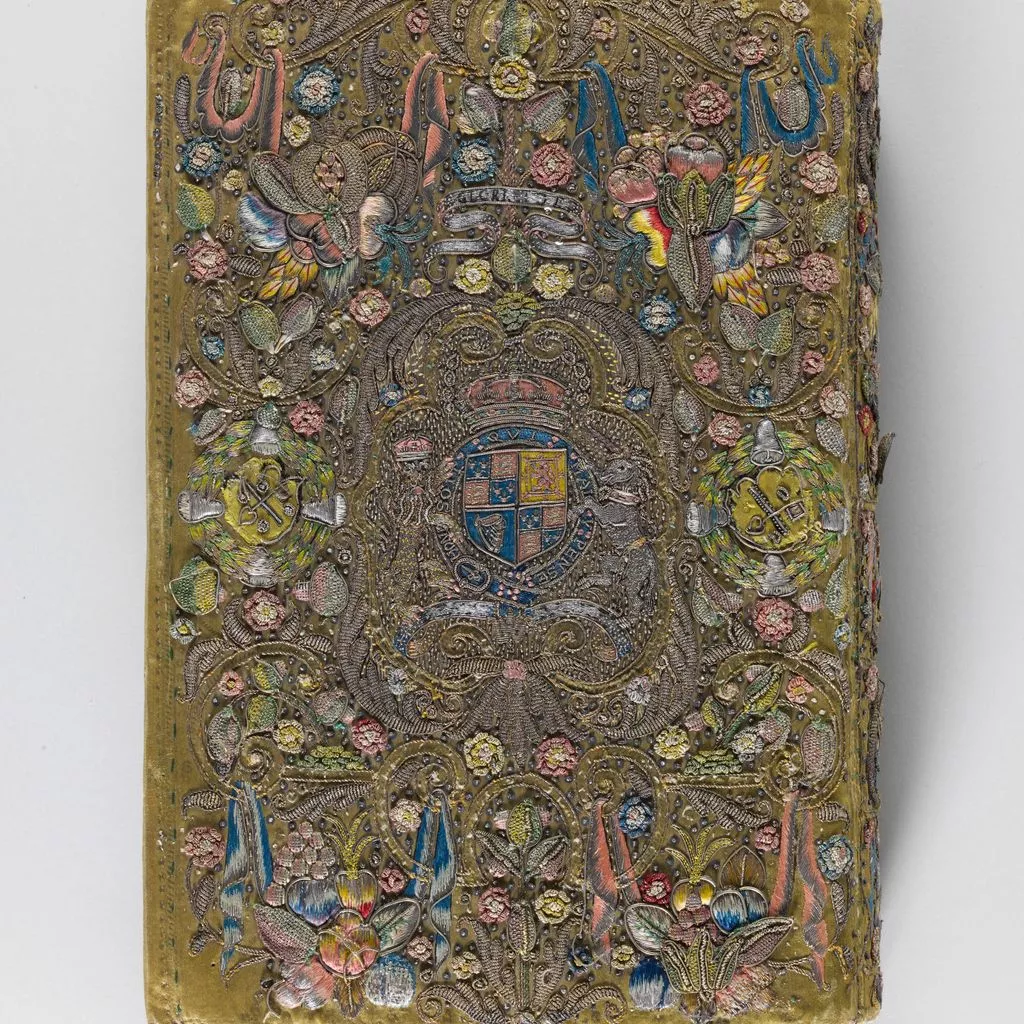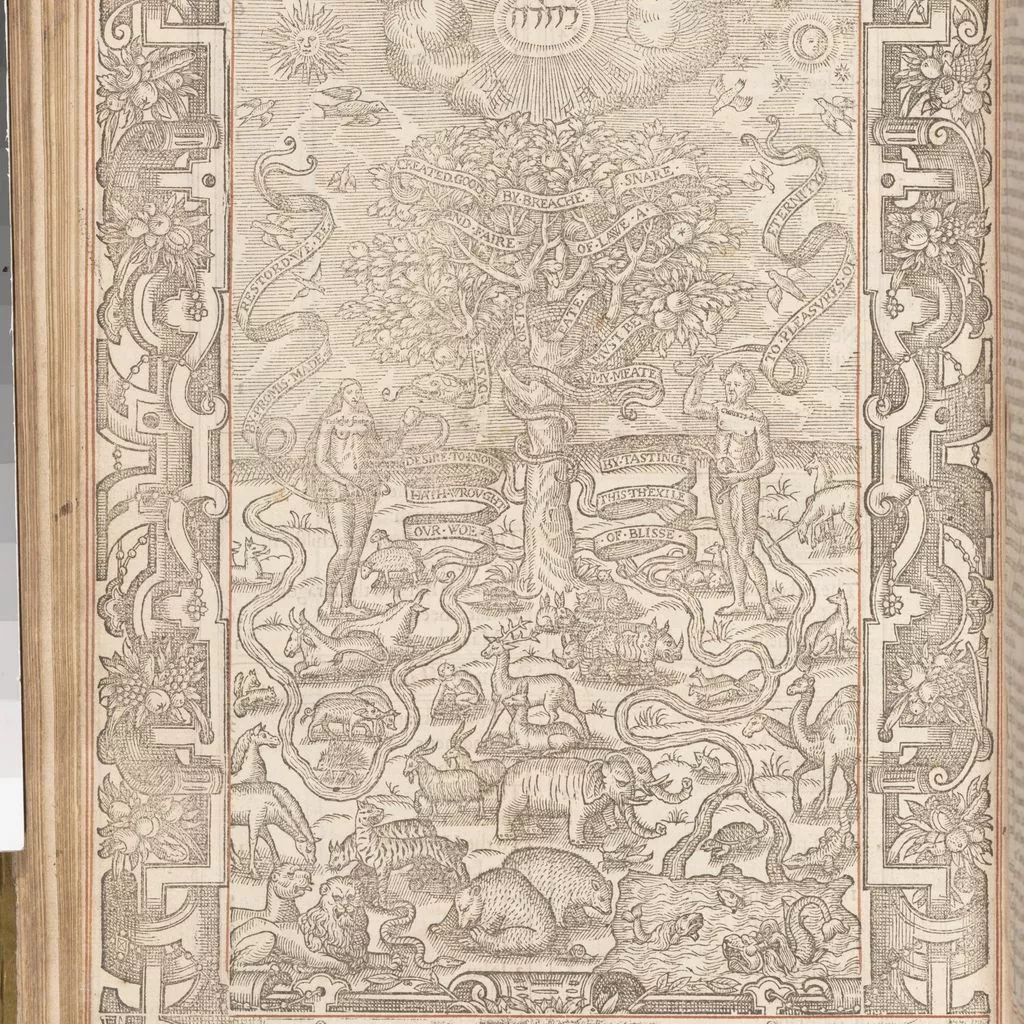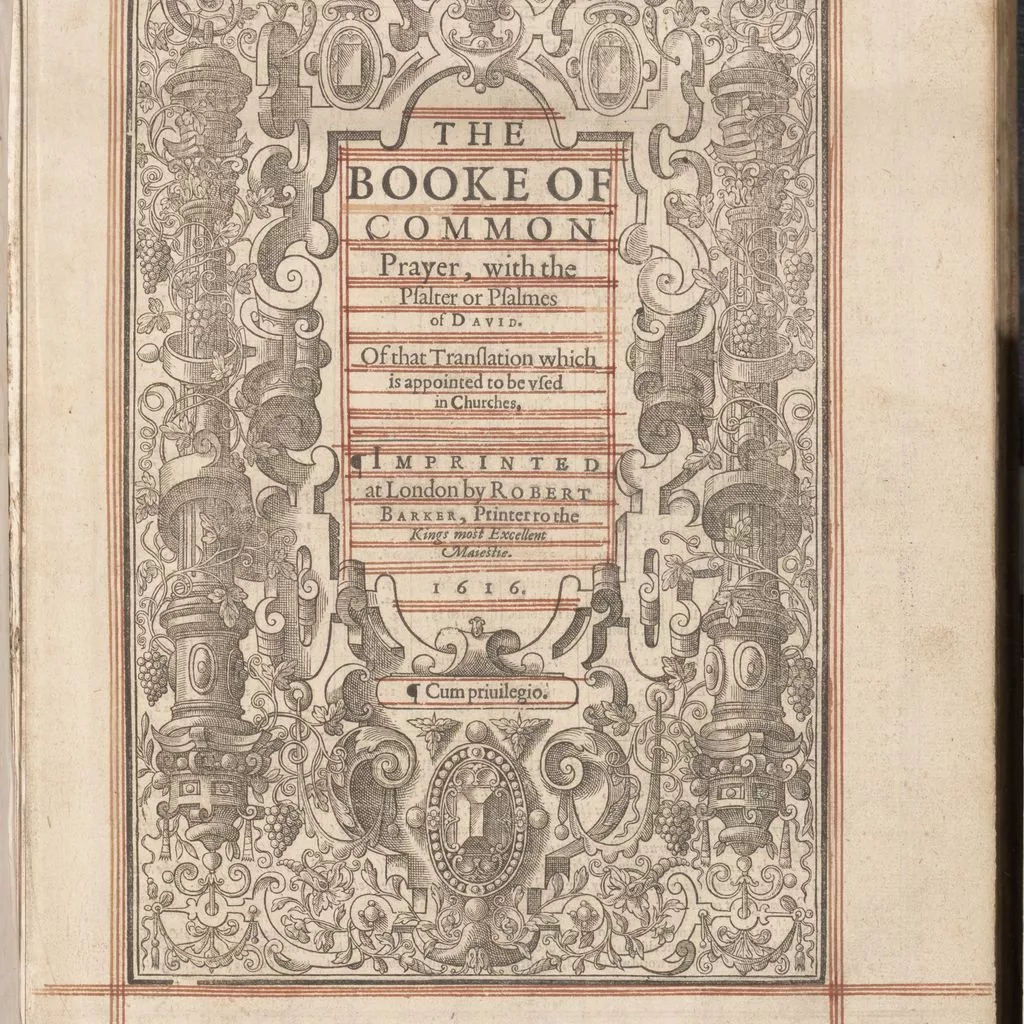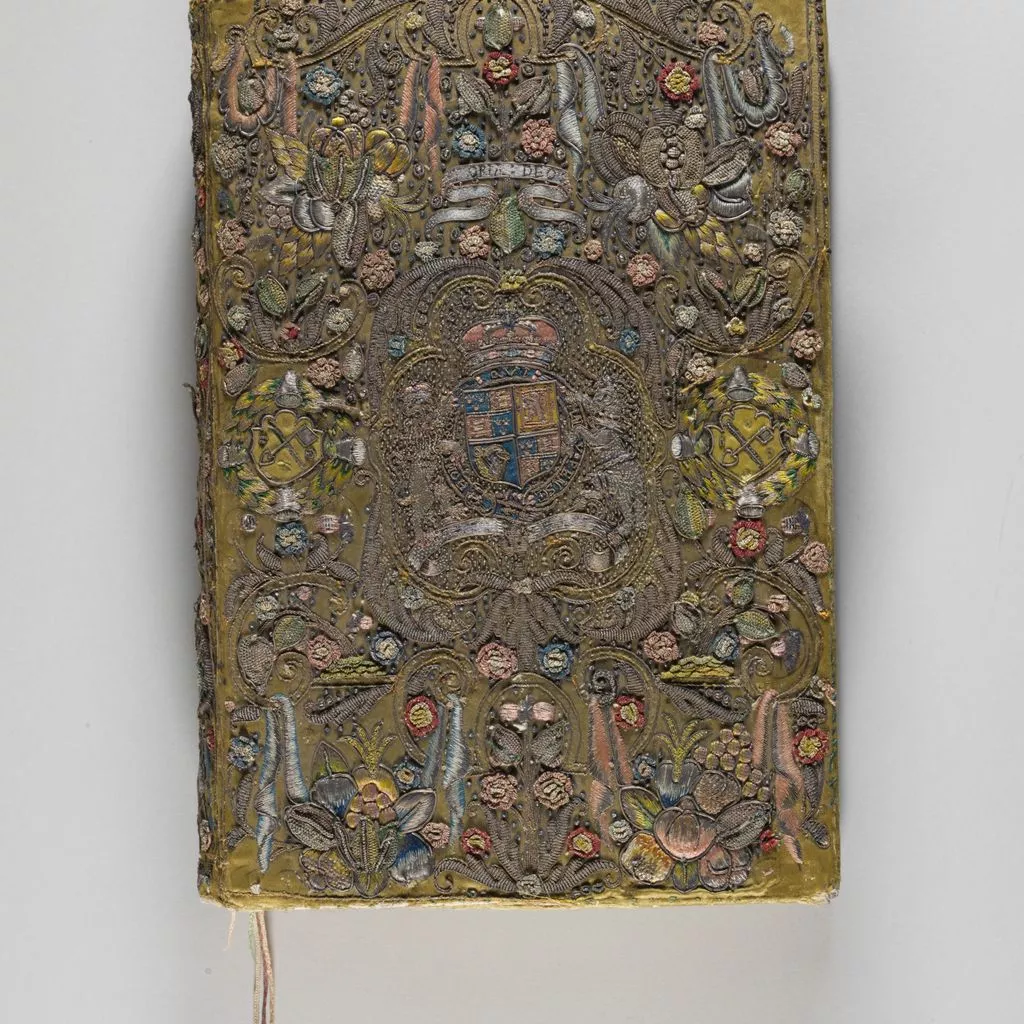Description
This elaborate quarto-size bookbinding is the work of a professional embroiderer and contains a rich variety of materials applied with a series of complex and imaginative techniques. The composition of the cover and matching back is dominated by a central royal blazon of the Stuart monarchy quartered with the arms of England, Scotland, and Ireland. The arms are surmounted by the royal crown and supported by a lion and unicorn engaging the shield with the Order of the Garter with its motto: "Honi Soit Qvi Mal Y Pense" in silver filé. The royal arms are surrounded by a voluted cartouche accentuated by fronds of tightly packed silver purl, couched down closely onto the green satin ground and headed by a scroll with the inscription "Gloria Deo." Flanking this central cartouche are two unidentified badges bearing a crossed silver key and what appears to be a staff, each within a wreath of satin-stitch laurel leaves and silver bells. Beneath and above these is a finely worked voluted interlace of couched silver cording, from which all the foliage, flowers, and heavily fruit-laden festoons hang in thick profusion.The front cover’s degraded condition helps to identify the array of techniques. A surviving coil of couched silver purls on the lower right volute beneath the royal arms suggests that the entire interlace was once filled with such couched silver purls. This is confirmed by the remnants of stitch holes that once held them to the satin surface. In addition, some missing leaves on the festoon reveal how several detached buttonhole leaves were raised by small tufts of wool felt, still present in the spaces of the festoon’s missing leaves. The various fruits are made vivid by a mixture of pink, blue, red, and yellow silk threads blended expertly in long-and-short-stitch silk thread over padding that follows closely the shape of the gourds, apples or peaches, and pomegranates. The grapes are rendered in a variety of stitches, including couched silver purl in the form of grape clusters loosely stitched over with yellow and pink silk floss. The effect is a silvery pink-yellow variegation that mimics the frosty skin of actual grapes. Ink marks of the original design are still visible in places.The royal coat of arms had been associated with the English Bible since the break with Rome in 1534, when Henry VIII proclaimed himself the "Supreme Head on Earth" of the Church of England. Thereafter, the royal coat of arms became emblematic not just of the king’s temporal authority, but his spiritual authority as well. The Tudor, and later the Stuart arms, would be emblazoned over the printed Bible and other investitures of ceremony of the English church, examples of which can be found in the collections of the Victoria and Albert Museum. The cover encloses three books bound together: the Geneva version of the Bible and the Book of Common Prayer, printed in 1612 and 1616, respectively, by the London printer Robert Barker, as well as a Book of Psalms, printed by the Company of Stationers in London in 1624, a date that provides a terminus post quem for the binding. As David McKitterick notes, it was not uncommon for such works to be bound together in the seventeenth century, even texts of varied dates such as these. The richness of the cover suggests a ceremonial use. The prominent imprese on the cover, possibly relating to insignias of office, may also imply a more official usage. Yvonne Hackenbroch reported a "tradition" (though without supporting documentation) that this volume had been a gift from King James I to Sir Edward Denny, later 1st Earl of Norwich. Although in 1870 Isaac d’Israeli recorded an 18th-century report of a gift of gloves from King James I to Denny, this provenance cannot be confirmed from the imprese, which show no likeness to Edward Denny’s coat of arms and have yet to be identified. It may also be reasonably supposed that James would confer as gifts copies of his own Authorized Version of the Bible, in print since 1611, rather than the older Geneva version, as here. A surviving Master’s Crown of the Broderer’s Company, dated to the second half of the sixteenth century and illustrated in George Wingfield-Digby’s Elizabethan Embroidery (1964), is very similar in design and technique to this Bible cover. As such, the comparison brings the latter into association with an unquestionable piece of professional work of the very highest quality and shows the persistence of style and technique into the seventeenth century.[Jonathan Tavares, adapted from English Embroidery from The Metropolitan Museum of Art, 1580-1700: 'Twixt Art and Nature / Andrew Morrall and Melinda Watt ; New Haven ; London : Published for The Bard Graduate Center for Studies in the Decorative Arts, Design, and Culture, New York, The Metropolitan Museum of Art, New York [by] Yale University Press, 2008.]










